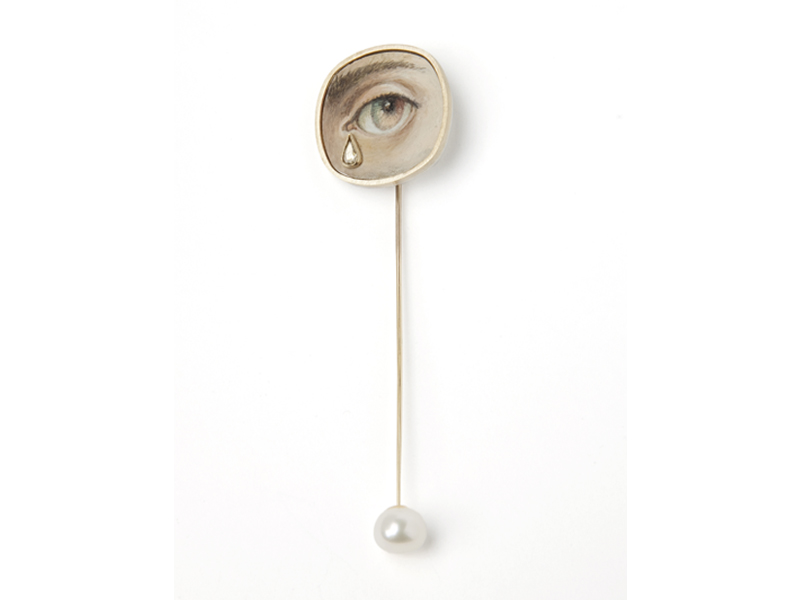
Tinsel Gallery, in South Africa, is developing a reputation for showcasing innovative and exciting work, mixing commercial events with more conceptually driven exhibitions that push the boundaries of art jewelry. The gallery houses a permanent collection of important jewelry from South Africa. Sandra Wilson caught up with Geraldine Fenn, one of the co-owners, to discuss the achievements of Tinsel and what the aspirations are for the future of the gallery.
Sandra Wilson: Tinsel Gallery was established in 2006. Tell us a little about how the gallery got started and what your expectations were at the time.
Geraldine Fenn: Jacqui Jenkins, who was a student of mine at the time (I was giving hobbyist classes from my studio) started Tinsel. She wanted to create a space where you could find interesting handmade jewelry. The shop had humble beginnings in her garage—I supplied her with my pieces and helped her to connect with other jewelers around the country, and after a few months I decided it would be nice to be more involved, and make it a more professional venture, so I approached her about going into partnership and we started looking for premises.
In the beginning, we weren’t too fussy about the work we accepted—we wanted it to be a platform for contemporary jewelers in South Africa, and we were happy to include everyone who was interested. At one stage we represented nearly 50 designers, with a very broad range of work. So to start with it was much more of a shop than a gallery, and we just wanted to make people aware that there was something else out there besides costume or fine jewelry.
Jacqui left the business in 2010, and from then on I started to refine things a bit, so that the offering was a bit more high-end and curated. My husband, Eric, joined me in 2011, and we continued on that path until eventually we moved to a bigger space at the start of 2015, which allowed us to have a gallery rather than a shop. It’s in a house in a suburb, which makes us less visible, so it’s always a challenge to get people to come for exhibitions, but we think it’s important to keep showing good contemporary work, so hopefully we’re growing our audience slowly but surely.
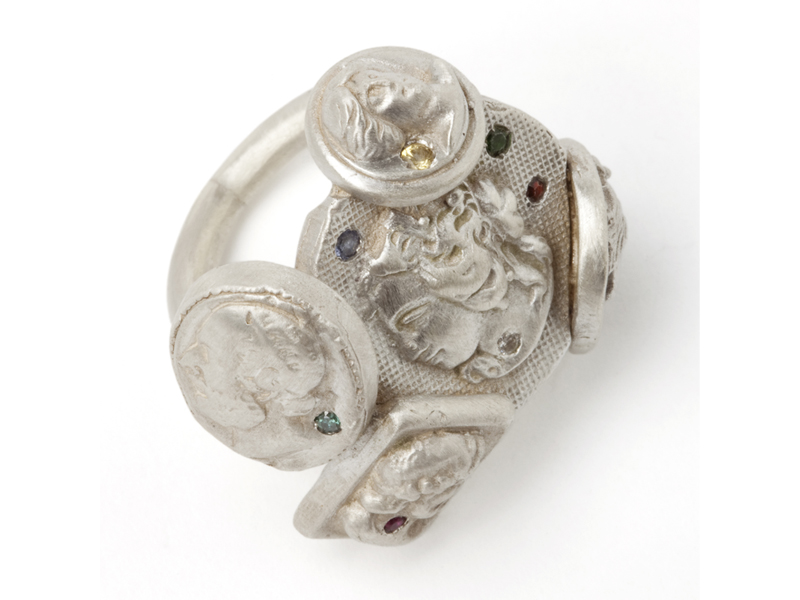
Where did the name Tinsel come from?
Geraldine Fenn: Jacqui came up with the name when she started the business, and it seemed appropriate at the time. Now that we have a more curated selection of work, it feels a bit frivolous, but we decided on balance it was better to keep it.
What would you say are the gallery’s major achievements/successes?
Geraldine Fenn: In the past two years of being a bona fide gallery, we’ve had a real mix of shows, ranging from more commercial work to very conceptual stuff by master’s students. I like that we have the freedom to do that and it keeps things interesting. We don’t really look at the gallery in terms of monetary successes, because it’s really a labor of love rather than a commercially viable enterprise. (Myself, my husband, and my mother-in-law, Liz Loubser, are all jewelers who do more commercial work, and we all give time and resources to keep the gallery going.) So I think our biggest achievement is creating a bit of a community for contemporary jewelers in the country and a platform for them to exhibit their work. We keep the flag flying even though the audience isn’t as big as we’d like it to be.
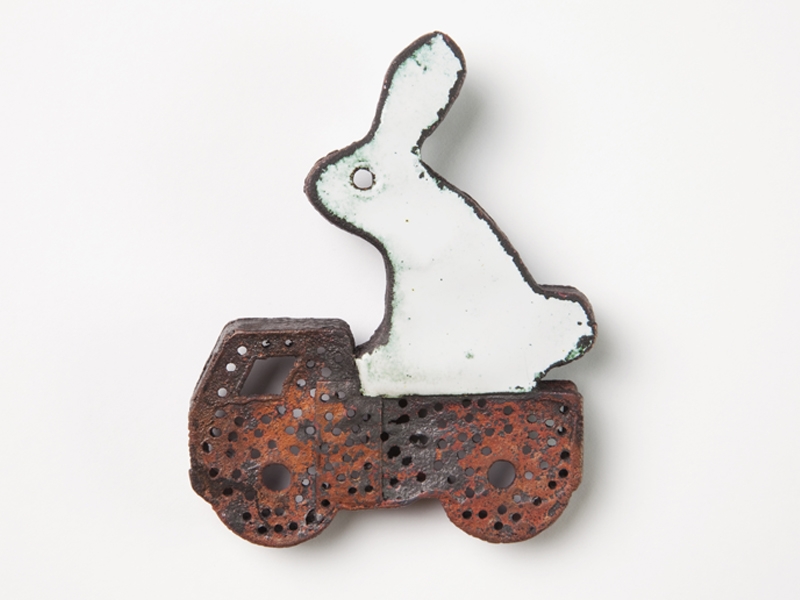
You combine running the gallery with operating a jewelry studio with Eric Loubser. How do the two aspects relate and connect—or do you see them as quite separate from each other?
Geraldine Fenn: It’s all very interconnected because Eric’s mother Liz also has her workshop on the premises and she has input on the gallery as well, so it’s all quite organic. I divide my time between working at the bench and running the gallery, but it all happens in the same space so it doesn’t feel like a separation. Also, our commercial clients come through the gallery to meet with us, so it’s nice that they are exposed to more contemporary work.
The gallery also manages a permanent collection of South African contemporary jewelry. Why was this important to you?
Geraldine Fenn: I thought it was important to keep a permanent collection of work for sale because that was what we wanted to achieve with Tinsel right from the beginning. And we also we wanted to have the more commercial stuff available to our longstanding clients, who often want to buy gifts and things and don’t always want to have pieces custom-made.

On Instagram you describe yourself among other things as a “baby mama.” What impact would you say being a mother is having on your career, the gallery, and your future aspirations?
Geraldine Fenn: Phew, that’s a big question! It certainly adds a layer of complexity to things, so we might not do things that we’d like to because it would just be too difficult at this stage (things like taking work to an overseas fair, for example). It also means that I’m a bit less productive than I was before, because our hours have to be more consistent and because we’re generally sleep-deprived. Children don’t really respect your schedules and deadlines, and they get sick at the most inconvenient times! For now they have to take priority, so there are things we could be doing but aren’t, but we’re lucky to have our own business, which gives us a lot more flexibility than a regular job would, and I’m confident that we’ll be able to do more when they’re a bit older (our two boys are three and one).
Having children does throw your aspirations for the future into sharp relief, though, and it’s more important now than ever that we try our best to do something good for contemporary jewelry in South Africa. The time I spend away from my kids needs to be worthwhile, and we need to build something good that will end up benefiting them.
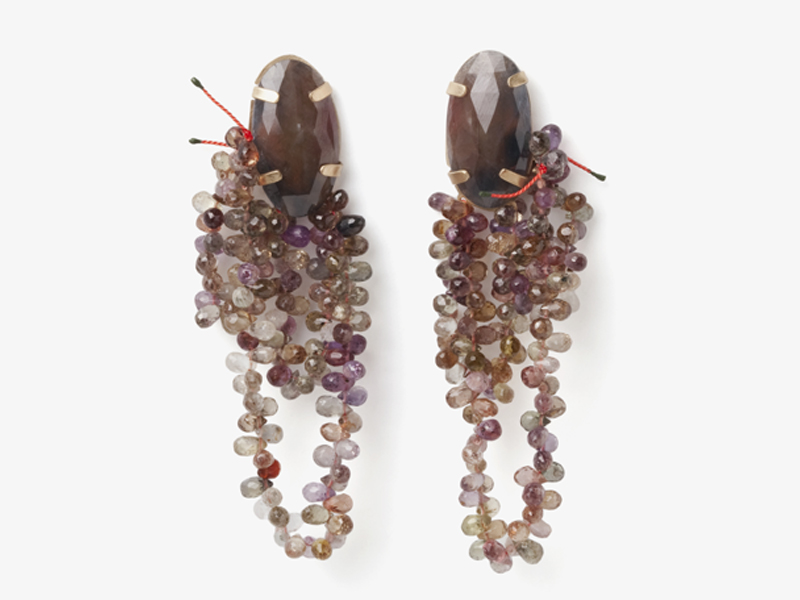
You recently took part in an AJF Hangout where you discussed the South African art jewelry scene. How was this experience, and has anything happened as a result of it?
Geraldine Fenn: It was a great experience simply because someone was interested in what we had to say and what is happening in jewelry here. That seems like a little thing, but we often feel very isolated here, with a very small audience of people who appreciate what we do, so to be taken seriously like that felt really good. Nothing concrete has happened as a result, but I feel like there’s definitely more energy around contemporary jewelry and a bit more of a community starting to develop, so I’m confident that things will start happening.
I’m trying to encourage our jewelers to be more proactive and submit work for international opportunities that arise, and I’m harassing the teaching departments about getting their postgraduate students to submit pieces of writing to associations like AJF. We need to be part of an international community, and AJF has spurred us on to make more of an effort in that regard.
Is art jewelry from South Africa associated with a particular genre, e.g., narrative, conceptual, etc.?
Geraldine Fenn: There isn’t an overriding style that is South African. We have such a diverse cultural landscape (11 official languages!) and our design reflects this multiplicity.
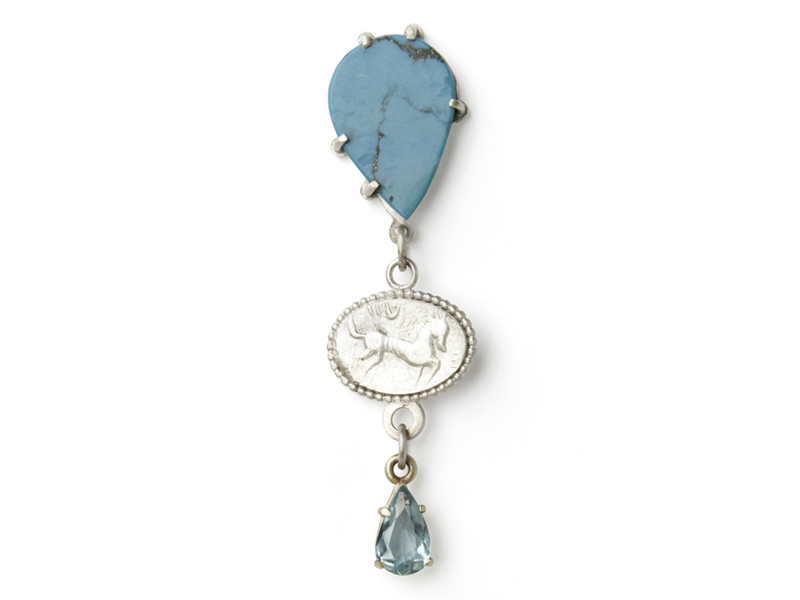
Have the interests of the field changed since the gallery was created?
Geraldine Fenn: That’s hard to say, since the field here is so small that nearly all our contemporary jewelers also have to make more commercial work, or teach, to earn a living. The interests of the field—which is also very young here—have always been simply to grow the audience for our work, which would create more opportunities and encourage more jewelers to do more experimental work and stick with contemporary jewelry. (Many talented graduates either go into the commercial industry or leave the field entirely to pursue other careers because it’s a difficult thing to be successful in.)

How many exhibitions a year do you organize? And what is it that guides your choice?
Geraldine Fenn: We usually do about six shows a year, and we like to have a mix of things: one or two solo shows; a couple of shows that mix jewelry with other design or art media; and one show at the end of the year that’s a big group show involving at least 30 artists each doing one piece. Sometimes we approach people to do shows and sometimes they approach us. Our choice of shows is based on what would be interesting for viewers and for us.
What’s your approach to curating jewelry, and what would you like to try that you haven’t before?
Geraldine Fenn: Our approach is to try to show the works in the best possible way, and we generally use quite traditional things like plinths to display the work on. I’d love to be a bit bolder and risky with the curation, when the work demands it, but the reality is we’re operating on a bit of a shoestring so we have to use what we’ve got.

What are your ambitions for the gallery for the next 10 years, and what strategies might you try to grow your audience for art jewelry?
Geraldine Fenn: I’d like us to become a really energetic hub for contemporary jewelry, and pass on some of the passion we have for the field to our audience. We have been trying to grow our audience for over 10 years now, and it still feels like an uphill climb. We don’t have any budget for marketing, so we have to rely on getting the message out there without spending any money.
We do have magazines borrowing our pieces for fashion shoots, so we do have some visibility in the media. We try to participate in art and design fairs to access a broader audience (there’s a fair in Johannesburg called Handmade Contemporary which we were at last October). That does cost money, but we usually sell enough to make it worthwhile. And we try to use social media to get our work out there—we generally aren’t very good at it, but we just had some customers from the US who found us through Instagram, so you never know!
I guess the crucial thing is to keep involved and keep pursuing opportunities, and encouraging all our local contemporary jewelers to pursue those opportunities, too. Every bit helps, and any exposure that any of our artists get, independent of us as a gallery, will help to increase the audience and therefore benefit everyone. It’s encouraging that there seem to be more competition and exhibition opportunities being opened to jewelers, and I think it’s really important that we all enter them. For example, there’s a company here called Southern Guild that specializes in high-end collectible design, and they do lots of shows and take work to overseas shows like Design Miami. In the past they’ve focused on furniture, but recently, for a show called A New Wave, they had an open call for submissions and five jewelry pieces ended up being accepted, so they showed jewelry for the first time. That’s a good sign for me because they do access a very broad audience, so we can benefit from that.
So basically my plan for growing our audience is to increase the visibility of our work, and we’ll try to achieve that by participating in as much as possible. I’d also really love to produce a book on contemporary South African jewelry, which I’m determined to start on this year. We also really want to promote South African jewelry abroad—take the gallery to a show like Collect in London, for example—and we’d like to initiate some exchanges with galleries in other countries. Hopefully our country’s political and economic situation will improve, which will make these aspirations easier to achieve.
Thank you!





